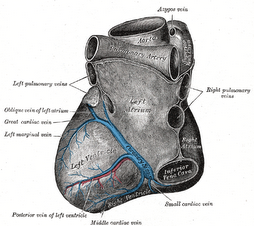
This EKG shows a slow wide complex tachycardia with intermittent narrow complex beats. The 5th and 10th beats are sinus rhythm and close examination of these beats will give you a clue to the cause of the wide complex rhythm. In Leads II and III you can appreciate ST elevation indicating an acute current of injury due to a myocardial infarction. The wide complex beats therefore represent an Accelerated Idioventricular Rhythm or AIVR which is usually seen following reperfusion after an acute infarct.
Accelerated Idioventricular Rhythms are ectopic ventricular rhythms at rates between 40 bpm and 100 to 120 bpm. The ventricular origin of this rhythm can be demonstrated by the usual EKG criteria which include AV dissociation, fusion, and capture complexes. In this EKG the 4th beat represents a fusion complex and the 5th beath represents a capture beat proving that these beats are ventricular in origin. The incidence of Accelerated Idioventricular Rhythms following acute MI is reported to be between 8 and 36 percent. This rhythm can also be seen in patients with primarily myocardial disease, hypertensive, rheumatic, and congenital heart disease. It can also be caused by digoxin. See more on www.askdrwiki.com
Friday, January 5, 2007
EKG of the Week 1/5/2007
Subscribe to:
Post Comments (Atom)


No comments:
Post a Comment